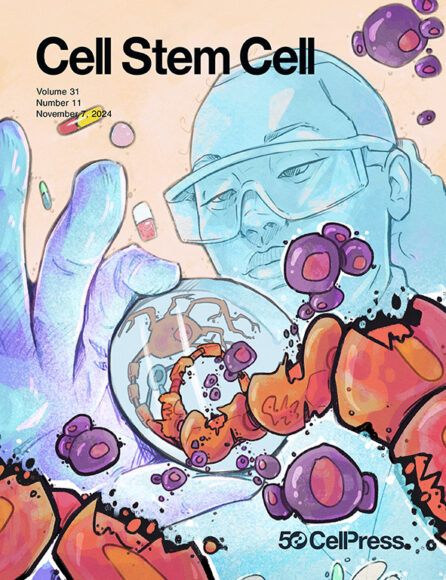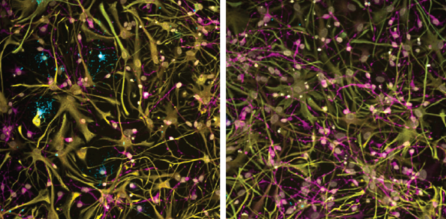Human Stem Cell Models Reveal the Brain’s Hidden Role in Multiple Sclerosis
NewsLargest collection of patient stem cell models of multiple sclerosis to date uncovers novel disease insights and opens the door for new treatments
The Context: Multiple sclerosis (MS) is a chronic neurological disease in which the body’s immune system attacks the patient’s nervous system. This results in symptoms -such as fatigue and cognitive impairment- which get worse over time.
Most therapies target the immune system and focus on reducing the frequency and severity of immune attacks, alleviating suffering but not stopping the progression of the disease. Rather than focusing on the immune system, NYSCF is exploring whether dysfunction in neurons and glia -a neuronal support cell- also contributes to MS progression.
The Study: In addition to being an MS patient herself, NYSCF’s Senior Research Investigator Valentina Fossati, PhD, is a pioneer in the science of creating glial cells from a patient’s stem cells. Using cells from patients themselves provides a much more accurate picture of the disease than recreating MS in mice.
Dr. Fossati’s team, working in partnership with NYSCF–Robertson Investigator alumnus Dr. Paul Tesar (Director of the Institute for Glial Sciences at Case Western Reserve School of Medicine,) created the world’s largest collection of MS patient stem cells at NYSCF. The scale of this resource allowed scientists, for the first time, to study differences between the glia of diverse MS patients and healthy people.

The findings, which were published in the prestigious journal Cell Stem Cell, were remarkable: patients with primary-progressive MS created significantly fewer oligodendrocytes, a type of glia which protects neurons with a myelin coating. Preliminary data suggests that the oligodendrocytes are dying even though there are no immune cells present. This is the first evidence that glial cells themselves may be dysfunctional in MS patients, causing a deficit in protective myelin.

What it Means for Patients: Given this evidence that the death of oligodendrocytes may be a cause of MS, NYSCF is investigating whether other types of glia are also instrumental in MS. We are optimistic that further glia research will open the door to new therapies that protect and repair the brain, with the goal of treatments that stop progression of MS.